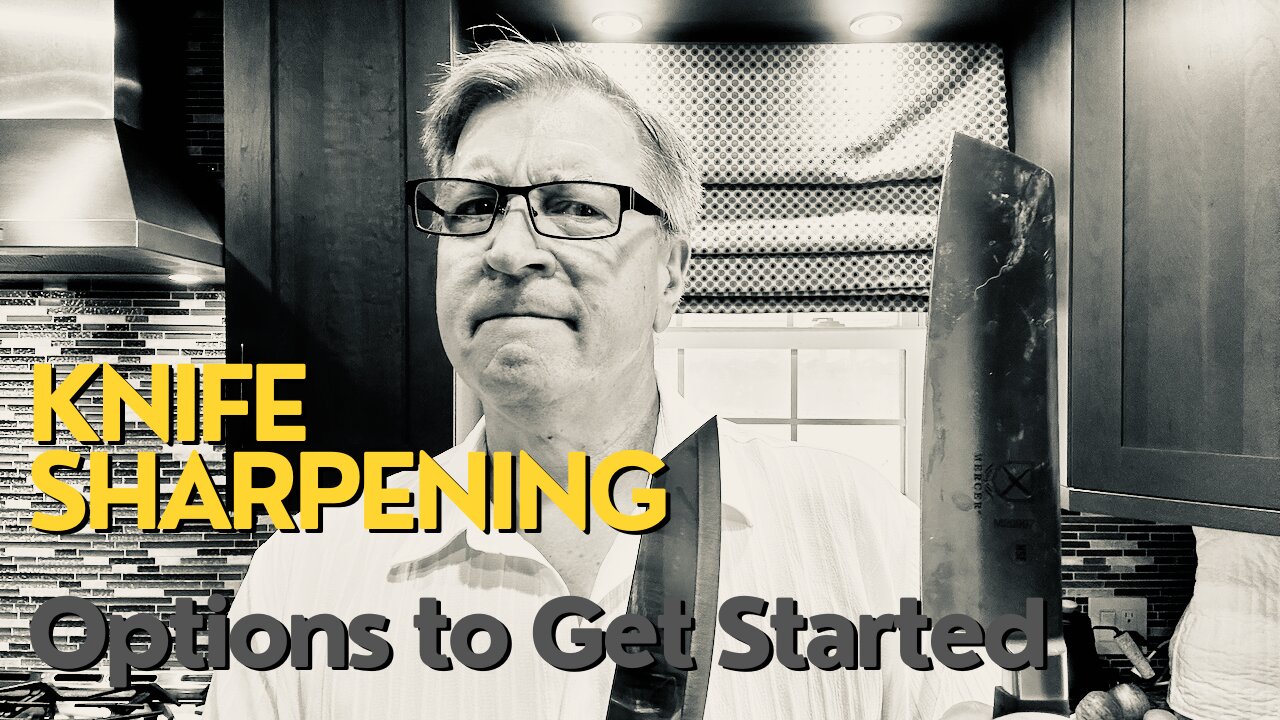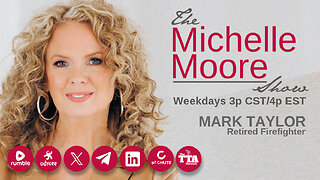Premium Only Content

Knife Sharpening Basics
Good day and welcome back to the channel! Today, we're doing something a bit different. We're not cooking, we're talking shop! Specifically, options for getting your knives sharp.
First, I am NOT an expert! I’m just a guy trying to make dinner. And, it’s helpful to have tools in good working order.
What I DO know if that there is an awful lot to learn, if you want to go down the rabbit holes of knives and of knife sharpening.
I also know what works and what doesn’t work, at least for me.
This video is a brief(ish) summary of that experience.
Knife sharpening, at its most basic, is about creating an edge that works for the specific task. The way you create an edge depends on the tool’s use, the type of metal it’s made from, and what your goals are, how much time you have and your budget.
For example: do you want the absolute sharpest edge?
Do you want an edge that will last?
Are you someone that’s using Japanese style knives that are only sharpened on one side?
Are you a knife enthusiast that is using knives made with “super steels”? Or are you using ceramic knives?
I’m going to assume that most people watching this channel are more mainstream knife users, who, like me, are just trying to get dinner ready quickly and efficiently. So, we’re going to talk about some basic concepts and apply that info to our needs.
What are the choices for knife sharpeners?
Basic categories:
Pull through
Guided manual
Guided powered
Full manual
Each of these types of tools has their own strengths and weaknesses.
Do these tools allow you to create a specific edge angle? DO they allow you to choose doing only one side? Do they remove a lot of material at once? Is there any skill involved in learning how to use these tools?
Pull through are the most basic and usually pretty inexpensive. They CAN work, but at a cost to the knife itself. They tend to remove A LOT of material. Use these regularly and you will see your knifes getting a bit smaller over time. They re-profile the edge to whatever angle the pull through manufacturer has set…you don’t have a choice.
https://a.co/d/5dLQtt6
It sounds like I’m dissing these types of sharpeners. Nope. They DO have utility and use cases. One example: any time you’re traveling and staying at a place where you’re planning to cook. My experience has been that most rental places don’t have good knives. And that most of the time, the not good knives don’t have a very good edge. Packing your own knives may not be practical. But, pull through sharpeners do travel easily.
They’re also useful if you are just starting out and don’t have money or time to spend on sharpening knives. That usually also means you don’t have good knives to ruin. So, no harm, no foul!
The next broad category are guided manual sharpeners. Here’s an example: Edge Pro Apex. These are terrific sharpening systems that take the concepts of using stones for sharpening and uses them in a way that doesn’t require much skill to be successful. It is a lot more work than the pull through tools. But with a lot of benefits.
First, you select the edge angle.
You can sharpen a ln Asian style knife that only has one edge sharpened. You can do serrated knives. You can chose to go totally buck Willy and get a mirror edge on your blades.
The downside? Cost and time. Up front cost can be from pretty inexpensive (there are low cost guided sharpeners available on Amazon) to fairly pricey.
https://a.co/d/6aojNkj
Guided powered like the Work Sharp system. Set the angle, set the speed, and start grinding!
There is a bit of a learning curve to the process, but it’s pretty modest. There is a cost initially and with “consumables”…different sharpening belts. It’s also noisy, and a bit dirty. And, because it’s a powered process, if you aren’t careful, you can end up inadvertently removing a fair amount of knife material.
https://a.co/d/4VDfVic
Finally, full manual (meaning, hand grinding using stones).
This is the process that people have been using for thousands of years. It requires practice, but maybe not as much as you might think. Or, maybe more appropriately, it took less time for me to be able to get a very good edge pretty consistently using a specific diamond “stone”.
The Sharpal 162N is a diamond stone that has two different grits, depending on which side you use. Using both can get you a very good cutting edge fairly rapidly, particularly if you are reasonably careful with your angles and your process.
https://a.co/d/aGRAOuF
The Sharpal changed the perception for me that I couldn't learn to use a stone. And, it’s not me…I’m no expert. It’s just that the stone is very forgiving and very good at helping you to get an edge.
So, that’s the quick summary of some of the different options for getting your knives sharp enough to be able to efficiently get dinner ready. What do you use? Let me know in the comments below!
-
 20:53
20:53
Nikko Ortiz
15 hours agoSentry's Guarding The Tomb Of The Unknown Solider...
57.3K21 -
 2:01:57
2:01:57
Side Scrollers Podcast
19 hours agoCraig PISSES Off The Internet + India/YouTuber CONTROVERSY + More | Side Scrollers
50.6K7 -
 6:45
6:45
GritsGG
15 hours agoRebirth Island Easter Eggs!
10.5K -
 8:27
8:27
MattMorseTV
13 hours ago $10.31 earnedIlhan Omar IMPLICATED in $250,000,000 FRAUD RING.
13.4K94 -
 1:50:00
1:50:00
The Michelle Moore Show
20 hours ago'Prayer Points...President Trump's Economy, Parental Warnings on 6-7 Demonic Ritual, Islamist Leader Reveals the Goal of Islam Ideology, and more' Lt. Mark Taylor The Michelle Moore Show (Nov 10, 2025)
28.3K34 -
 LIVE
LIVE
Lofi Girl
3 years agolofi hip hop radio 📚 - beats to relax/study to
199 watching -
 14:12
14:12
BlabberingCollector
1 day agoHBO Show Update, Audible Full Cast Ensemble Updates, Wizarding World Quick Hits!
76.2K5 -
 2:35:48
2:35:48
FreshandFit
16 hours agoShe Watched Our Show, NOW She's Happily Engaged
247K88 -
 1:49:19
1:49:19
Badlands Media
15 hours agoBaseless Conspiracies Ep. 158: Trump’s World Order, Israel’s Secrets & the MAGA Infiltration
90.5K34 -
 2:54:31
2:54:31
TimcastIRL
10 hours agoIllegal Immigrant ARRESTED After Shooting At DHS, War ERUPTS In Chicago
310K162